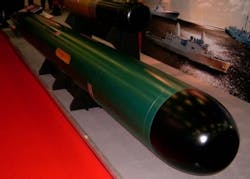Marine Corps eyes Intel architecture to enhance digital communications of Ground Counter Fire Sensor System
The GCFS also can provide intelligence to deployed Marine Corps units by locating explosions of improvised explosive devices (IEDs) and other kinds of roadside bombs or booby traps.
The GCFS Digital Communications Capability program seeks to enable the system to relay gathered data to the AFATDS by digital communications via the Joint Variable Message Format (JVMF). Today GCFS operators must pass system data to fire support and intelligence teams manually. Moving the system from a SPARC-Solaris architecture to an Intel architecture should ease integration of GCFS with a broad variety of other systems, Marine Corps officials say.
The Marine Corps procured the GCFS from SELEX Galileo, a Finmeccanica company in Basildon, England, in 2005, and the system became operational the following year. Companies chosen to migrate the system from SPARC-Solaris to an Intel architecture must obtain proprietary technical data from SELEX Galileo, Marine Corps officials point out.
Companies interested should respond to Marine Corps Systems Command no later than 15 June 2011, ATTN: FSS/Contracts (attn: L.D. Gillman), 2200 Lester St., Quantico, VA 22134. There is no guarantee of a contract award from this program as of yet.
For questions or concerns, contact Eileen Yorke Loba by phone at 703-432-3681, or by e-mail at [email protected], or Larry Gillman by phone at 703-432-3677, or by e-mail at [email protected]. Also contact SELEX Galileo by phone at +44 (0) 1268 522822, by post at Sigma House, Christopher Martin Road, Basildon, Essex, SS14 3EL, or online at www.selexgalileo.com.
More information is online at https://www.fbo.gov/spg/DON/USMC/M67854/M6785411I6014/listing.html.
